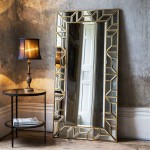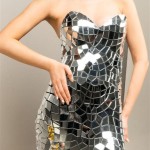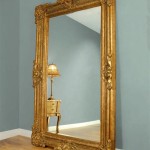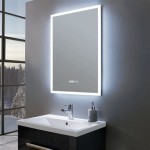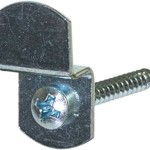Do Convex Mirrors Produce Inverted Images?
Convex mirrors are known for their distinctive bulging outward shape, unlike concave mirrors that curve inward. This unique shape dictates how light interacts with the mirror's surface and subsequently how images are formed. A common question regarding convex mirrors is whether they produce inverted images. The short answer is no; however, a deeper understanding of image formation in convex mirrors requires exploring the principles of reflection and the characteristics of the images they produce.
Light rays traveling parallel to the principal axis, an imaginary line passing through the center of curvature and the mirror's vertex, strike the curved surface of the convex mirror. Due to the outward curvature, these rays are reflected outwards, diverging away from the principal axis. They appear to originate from a single point behind the mirror known as the virtual focal point. This divergence is the key reason why convex mirrors cannot form inverted real images.
Real images are formed when reflected light rays converge at a point. These images can be projected onto a screen. Since the reflected rays from a convex mirror always diverge, they never converge in front of the mirror. Instead, the image is formed behind the mirror where the extensions of these diverging rays intersect. Such an image, formed by the apparent intersection of light rays rather than the actual convergence of light, is termed a virtual image.
Virtual images cannot be projected onto a screen. When viewing a convex mirror, the human eye traces the diverging rays back to their apparent origin behind the mirror, creating the perception of an image located there. This image is always upright, meaning it has the same orientation as the object. It is never inverted.
In addition to being upright, the image formed by a convex mirror is always diminished, meaning smaller than the object. This size reduction results from the diverging nature of the reflected light rays. The further the object is from the mirror, the smaller the image appears. This characteristic makes convex mirrors useful in applications where a wider field of view is desired, sacrificing image size for a broader perspective.
The relationship between object distance, image distance, and focal length in a convex mirror is governed by the mirror equation: 1/f = 1/p + 1/q. Here, 'f' represents the focal length, which is negative for convex mirrors, 'p' represents the object distance (always positive), and 'q' represents the image distance. Since 'f' is negative and 'p' is positive, 'q' must always be negative, confirming that the image is formed behind the mirror and is therefore virtual.
The magnification, 'M', which represents the ratio of the image height to the object height, is given by M = -q/p. With 'q' always negative and 'p' always positive, the magnification is always positive and less than 1 for convex mirrors. A positive magnification indicates an upright image, while a value less than 1 confirms the diminished size of the image.
The properties of images formed by convex mirrors – virtual, upright, and diminished – are crucial for their diverse applications. The wide field of view provided by these mirrors makes them valuable in security monitoring, allowing a large area to be observed from a single vantage point. They are also frequently used as rearview mirrors in vehicles, providing a broader view of the traffic behind. In these applications, the diminished size of the image is a trade-off for the increased field of view, prioritizing situational awareness over detailed observation.
Convex mirrors are also utilized in certain optical instruments and telescopes. Their ability to diverge light rays makes them useful in combination with other optical elements to modify the path of light and achieve desired magnification and field of view. The specific application dictates the curvature and size of the convex mirror used, tailoring its image-forming properties to the requirements of the optical system.
Understanding the principles of reflection and image formation in convex mirrors clarifies why they do not produce inverted images. The diverging nature of reflected light from their outward-curving surface leads to the formation of virtual, upright, and diminished images behind the mirror. This unique combination of properties makes convex mirrors valuable tools in a variety of applications, from enhancing safety and security to enabling advancements in optical instrumentation.
Can Convex Mirrors Ever Produce Real Images Inverted Magnified Quora
Can A Convex Mirror Form Magnified Image Quora
Can Convex Mirrors Produce Lateral Inversion Quora
Is It Right A Convex Mirror Always Forms An Inverted Image Quora
Can A Convex Mirror Produce Real Image
Can A Convex Mirror Produce Real Image When The Object Is Virtual And Vice Versa Concave If Yes How Will It Be Possible Why Quora
Can Convex Mirrors Ever Produce Real Images Inverted Magnified Quora
Can A Convex Mirror Form Real Image Quora
How Do Reflections From Convex Mirrors Make Objects Appear Smaller Quora
Real Image Wikipedia

